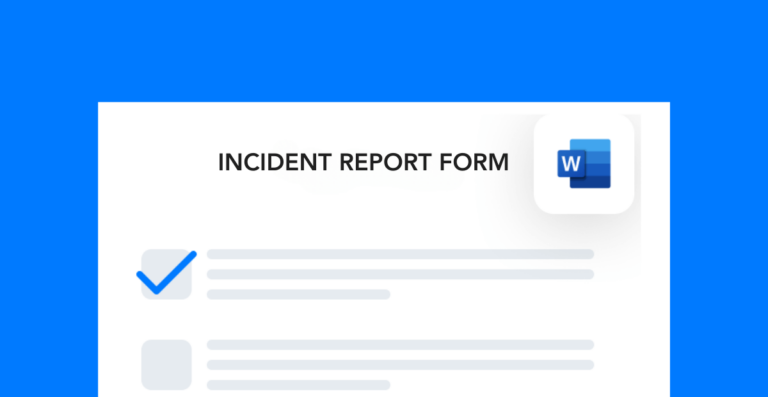Few procedures are as important in EHS as incident management. From initial response to documentation, having a solid strategy is key to future incident prevention. And getting workers involved allows you to gain even more insights that drive improvements and lasting changes. Use this incident reporting toolbox talk to teach your employees about the process.
Incident reporting toolbox talk overview
This toolbox talk goes over:
- The importance of incident reporting
- Types of safety incidents to report
- Incident reporting steps
It takes the entire team to create a high-quality incident report. With the input of witnesses and those working in the area at the time, we have a better chance of fixing the underlying problem for good.
Importance of incident reporting
In the workplace, incident reporting plays a key role in the future prevention of operational issues. The reporting process allows us to identify patterns and root causes that create risks and endanger performance.
Plus, reporting workplace incidents is a requirement of health and safety regulations and protects the company against potential litigation. Participating in the incident reporting process is an easy way to help us improve conditions for everyone—including our vendors and customers.
Types of incidents to report
Workplace incidents can affect all areas of performance, including safety, productivity, customer relations, quality, and more. Here are some examples of different types of incidents you should report:
- Injuries and illnesses like breaks, fractures, respiratory issues, heat stress, etc.
- Near misses that have the potential to cause harm but don’t
- Property damage related to weather, unsafe behaviors, or intentional actions
- Environmental incidents like chemical or oil spills
- Operational failures like production shutdowns, major quality control issues, etc.
Of course, the priority is always to get yourself out of harm’s way. But once you know there’s no immediate danger, the best practice is to tell your direct supervisor what’s going on.
Incident reporting steps
There are five main steps in the incident reporting process.
1. Secure the scene: Check to make sure that anyone with an injury receives immediate first aid and that you call for help if needed. Block off the area where the incident happened so that no one else gets hurt.
2. Notify a manager: Let the area supervisor and the EHS team know that there’s been an incident. They’ll want to start investigating it right away. The longer you wait to notify someone, the easier it is to miss critical details in the incident report.
3. Provide initial details: Give a description of the incident to whoever’s handling the investigation. Try to include as much detail as possible on who was there, what equipment or processes were involved, and what was happening at the time.
4. Start documentation: Begin filling out a report that includes all the details of the incident like witness statements, photo/video evidence, and other supporting documentation.
5. Complete corrective actions: Address the root cause of the incident by implementing corrective actions like training employees, changing processes or procedures, and installing new control measures.
The next time you see an incident, remember these steps and help us get the reporting process started as soon as possible.
Other posts you might like…
No posts

